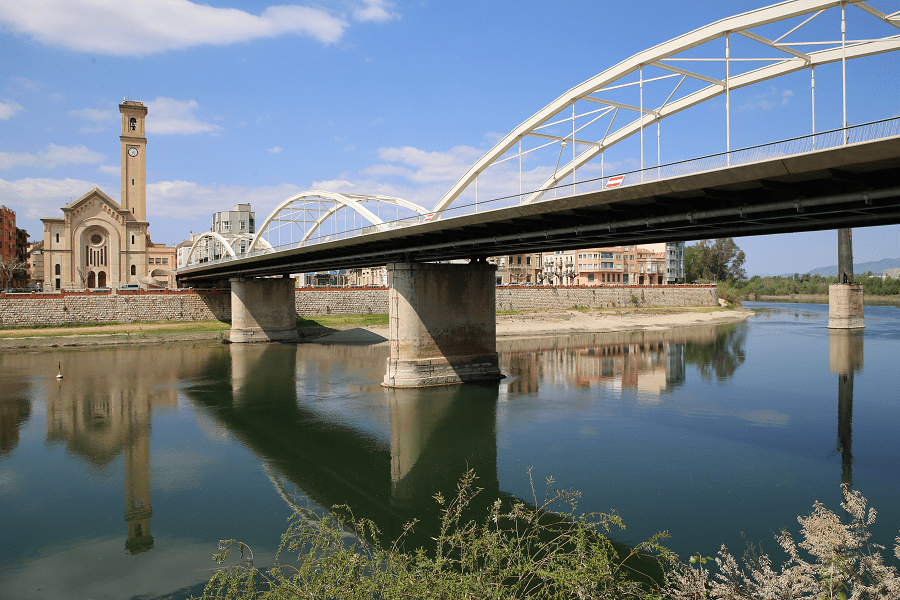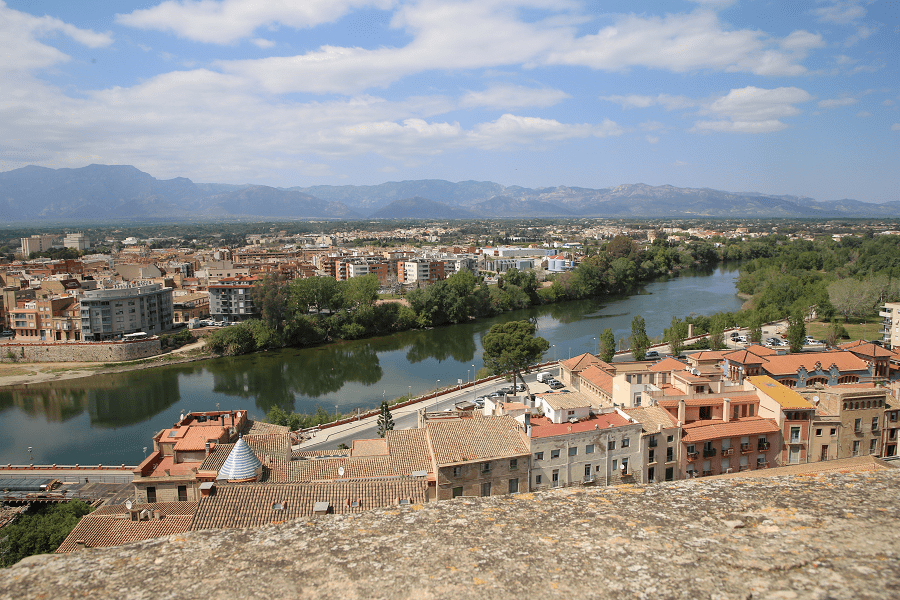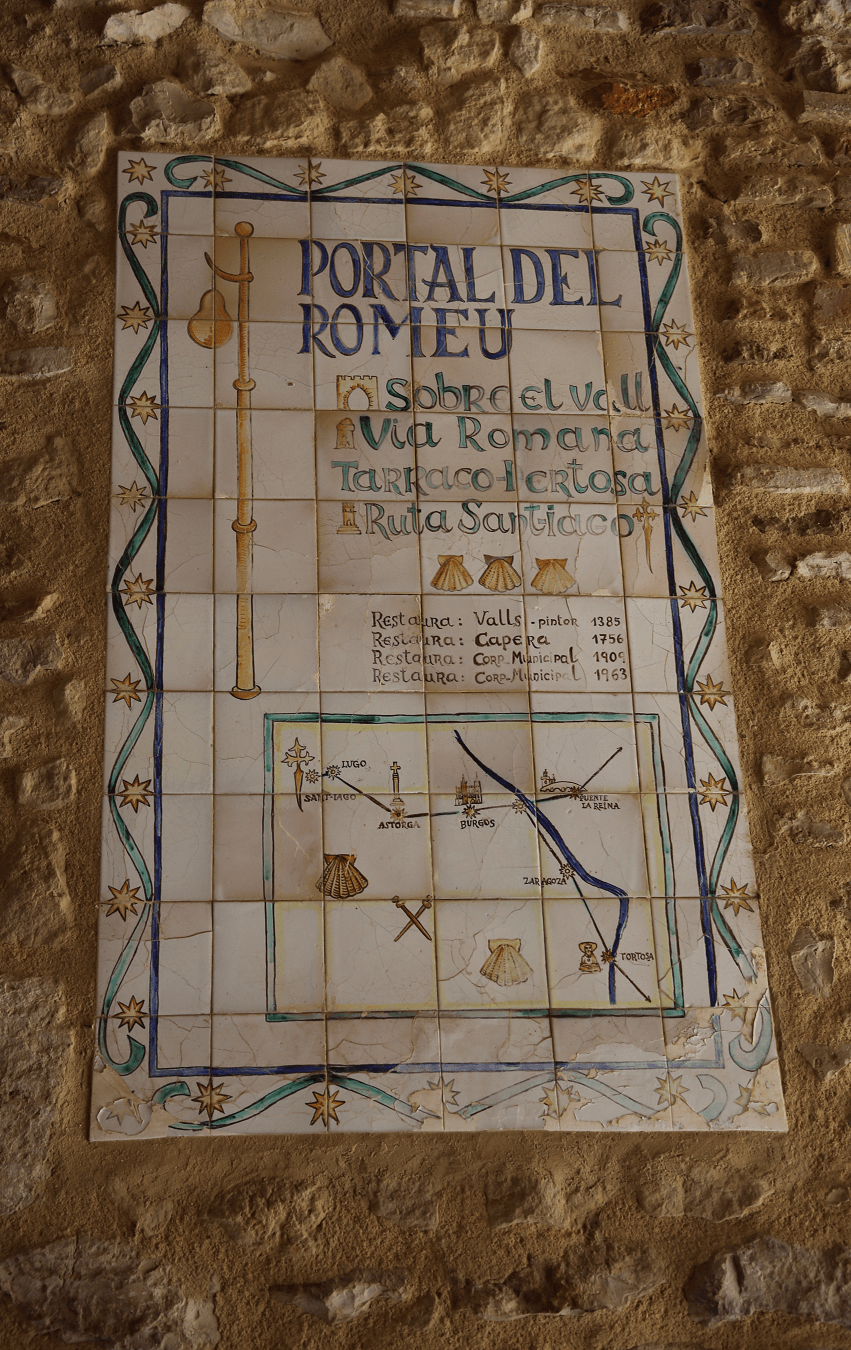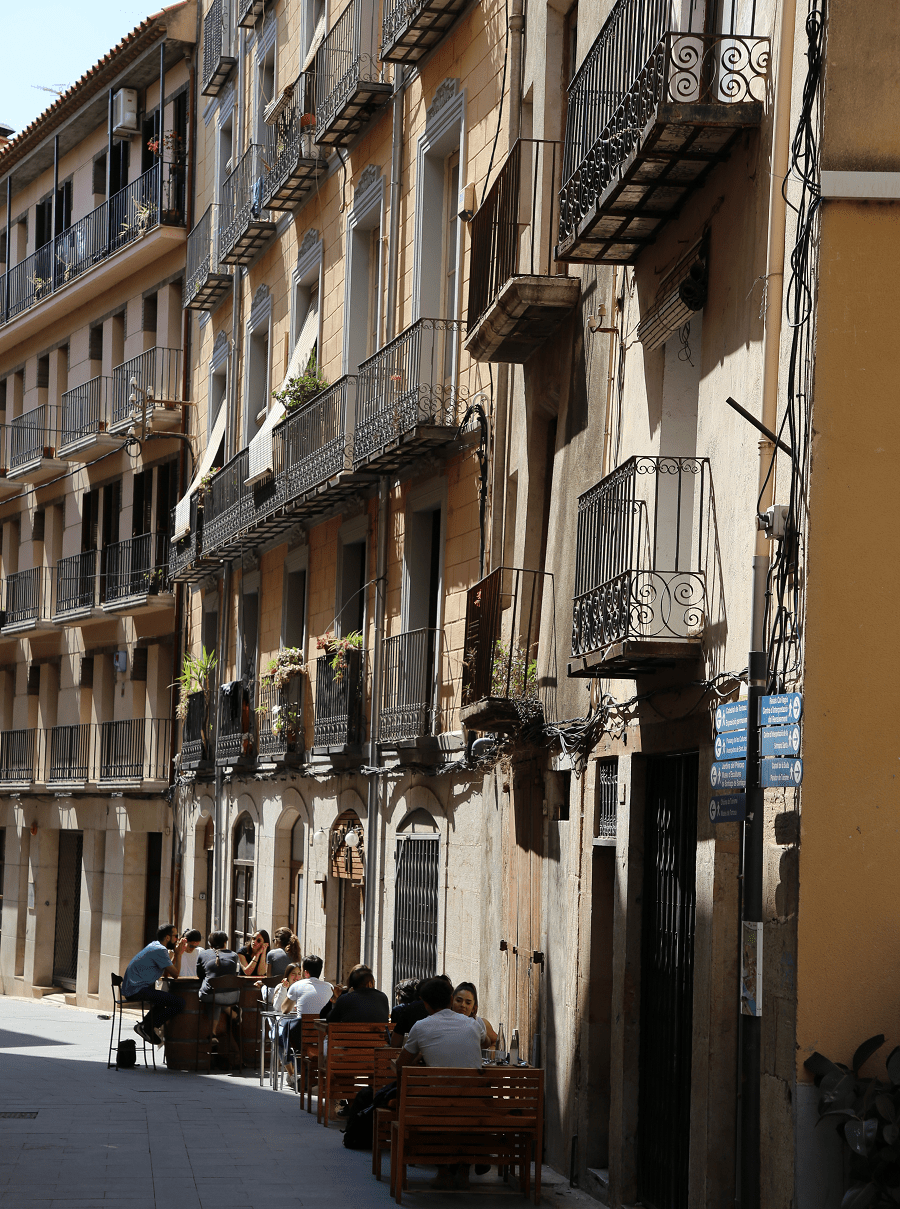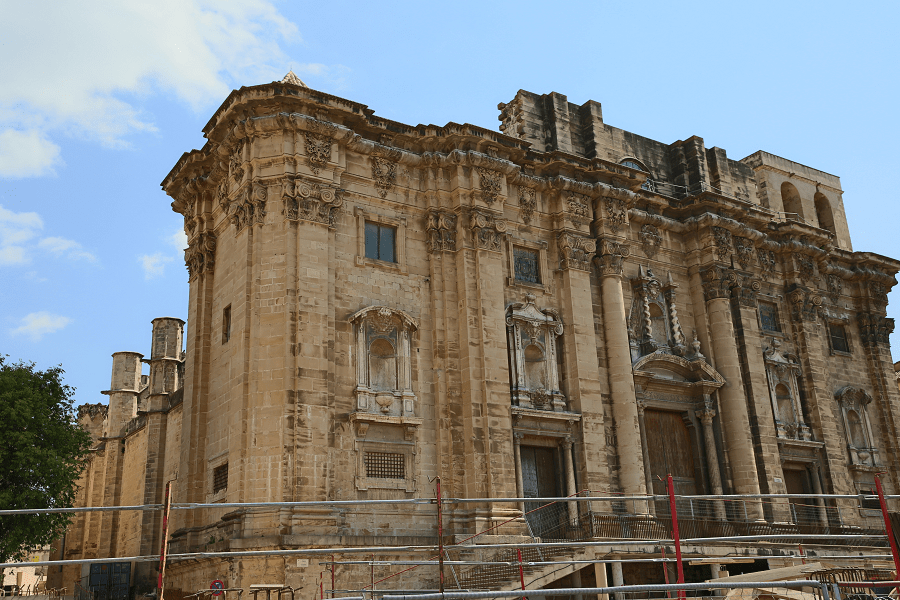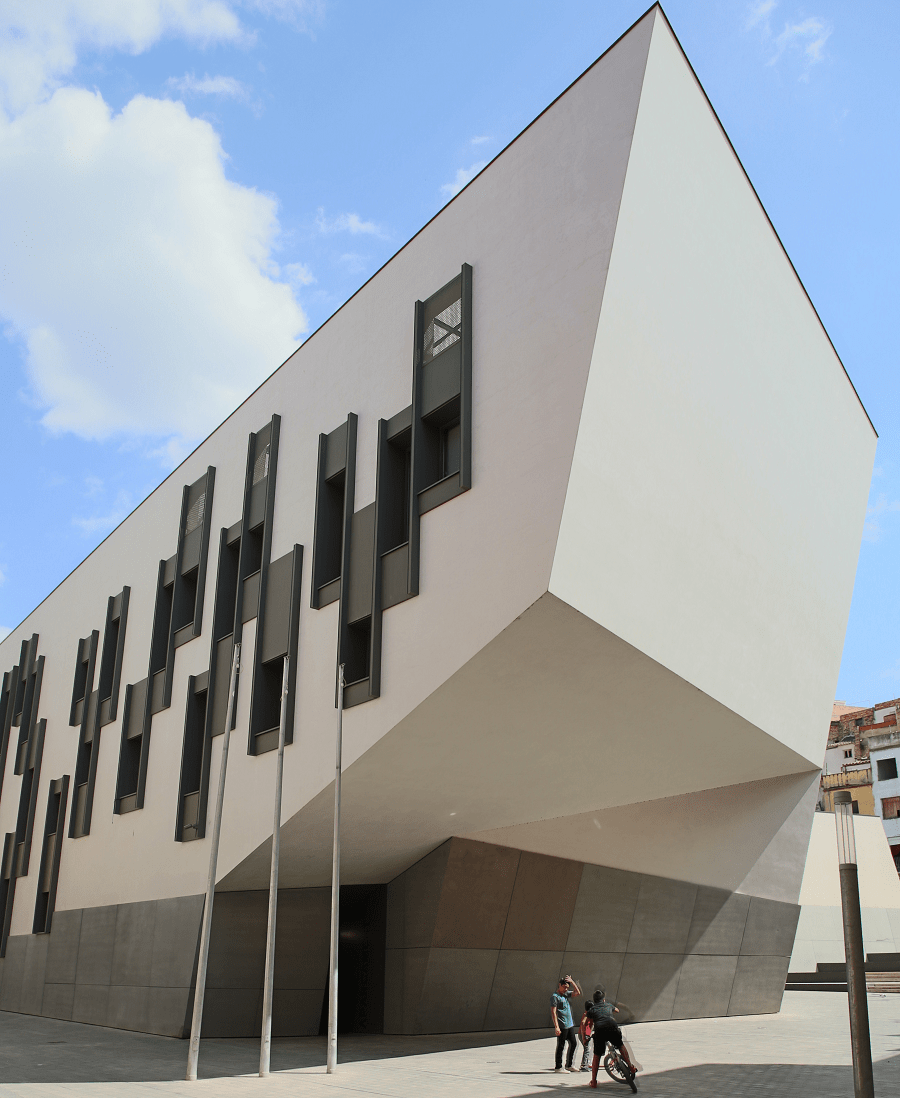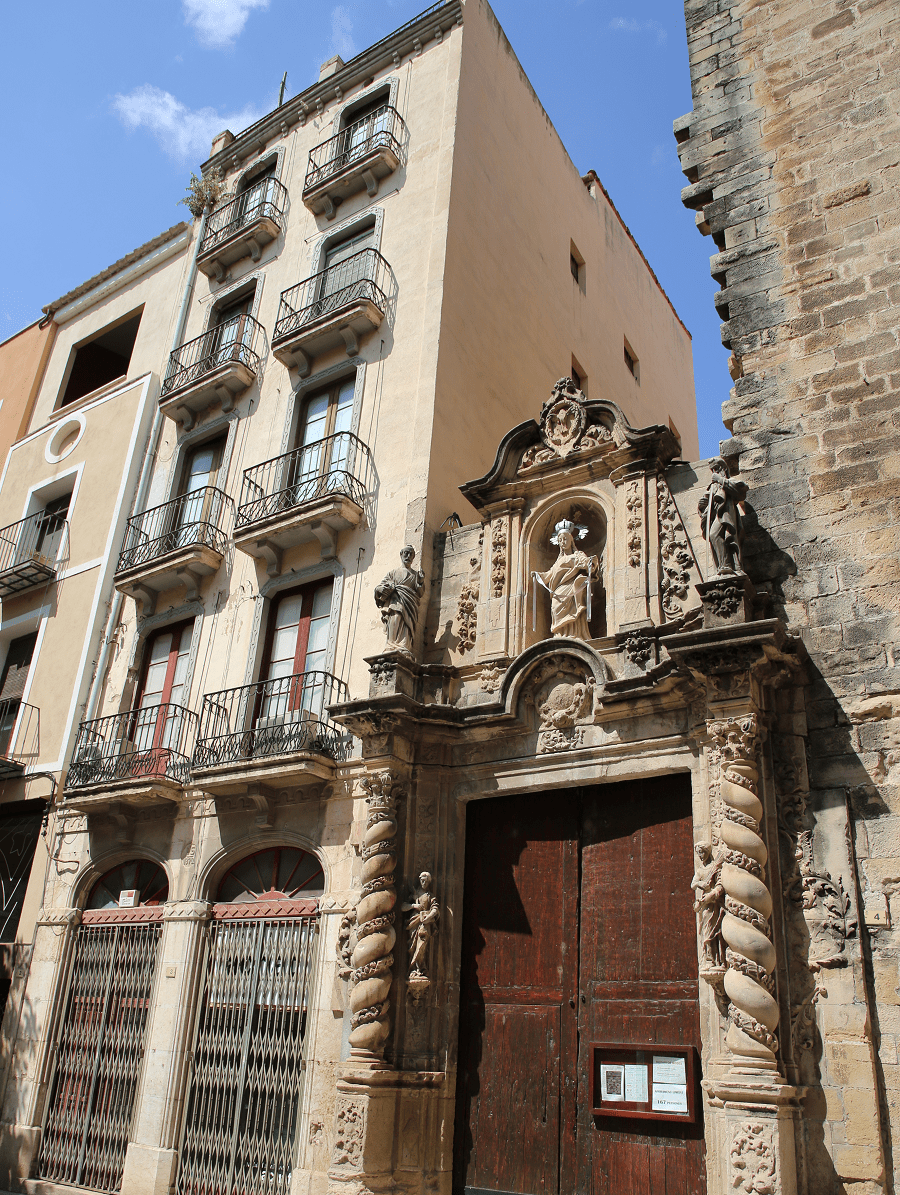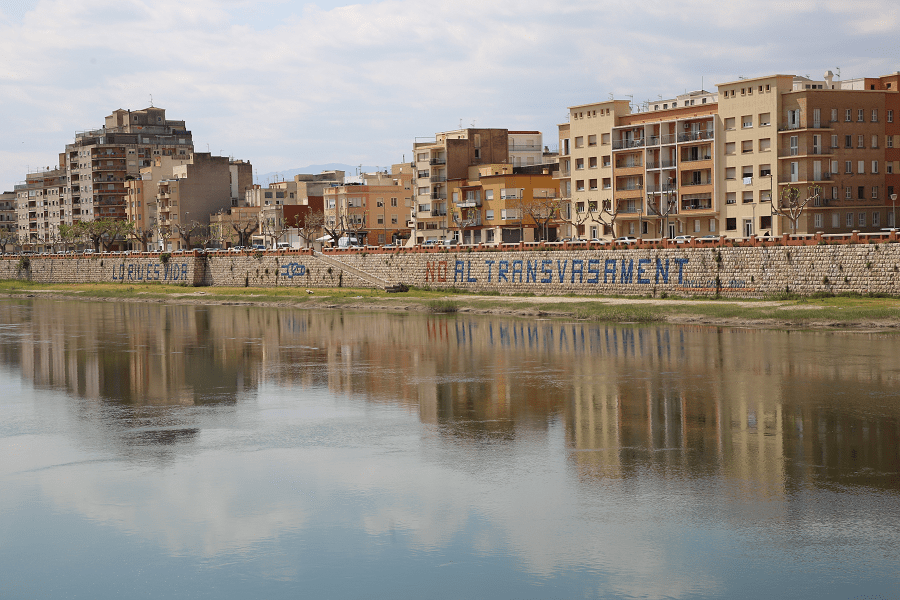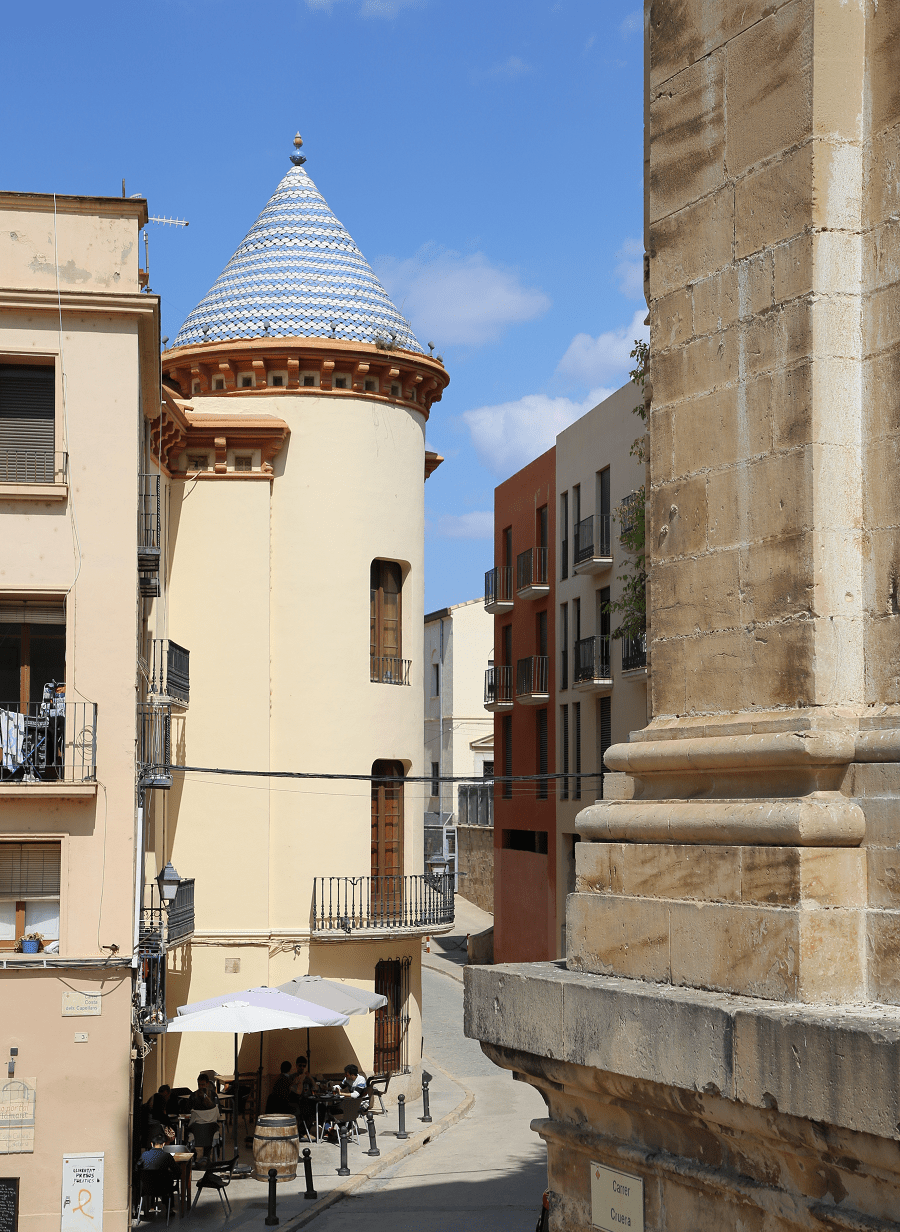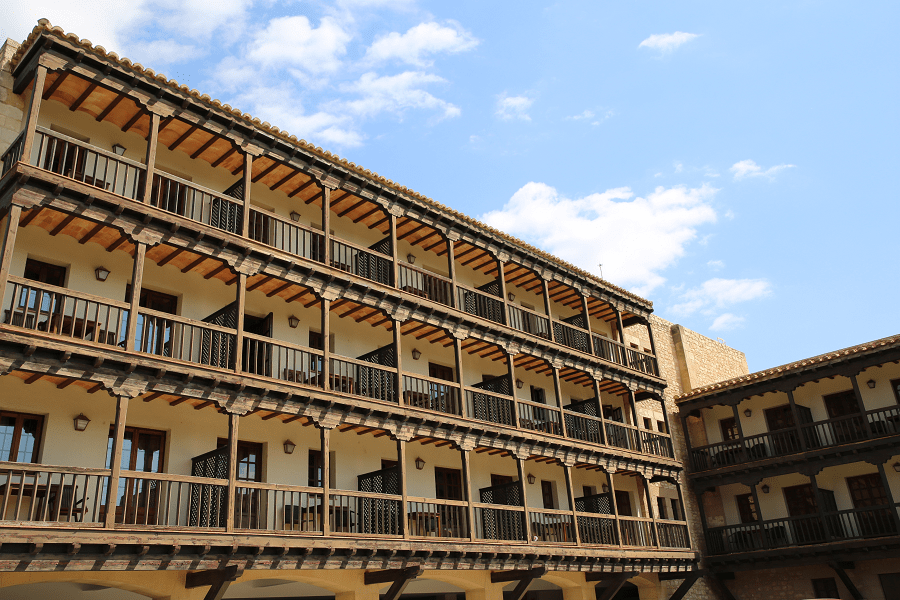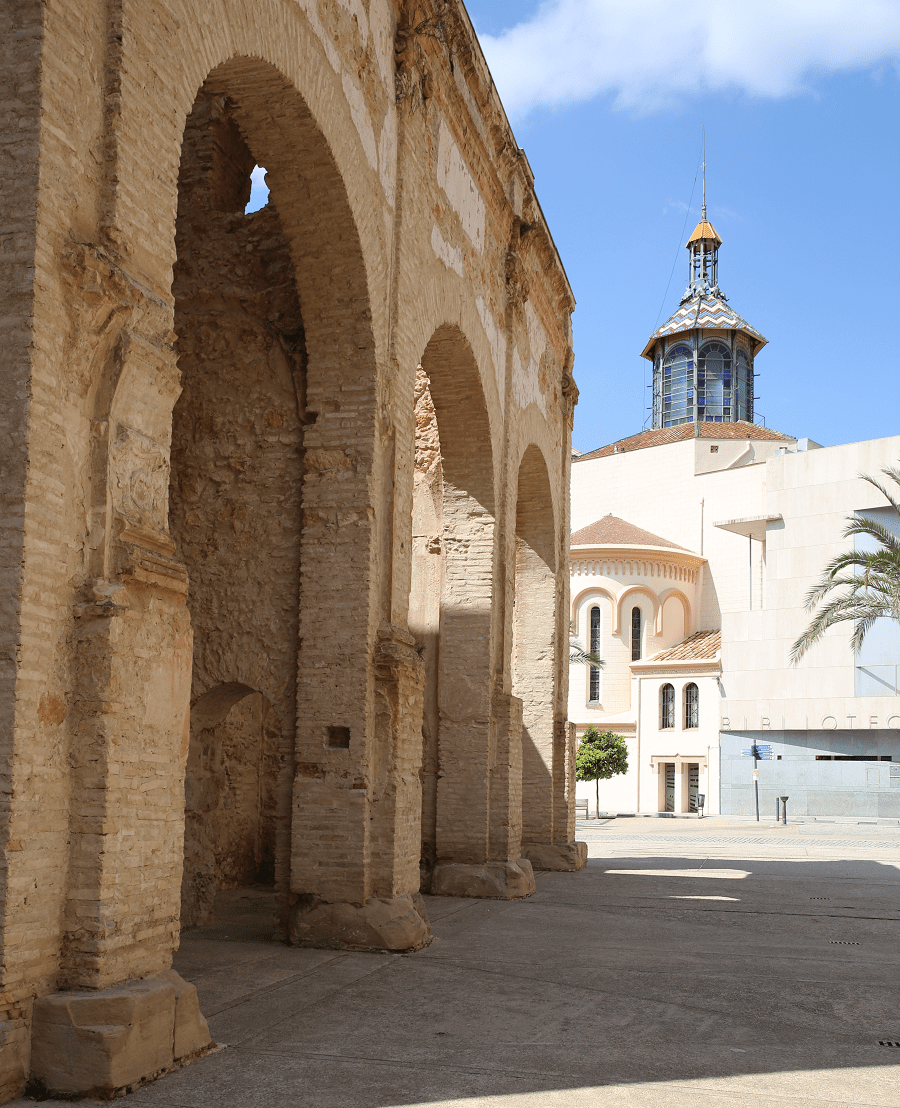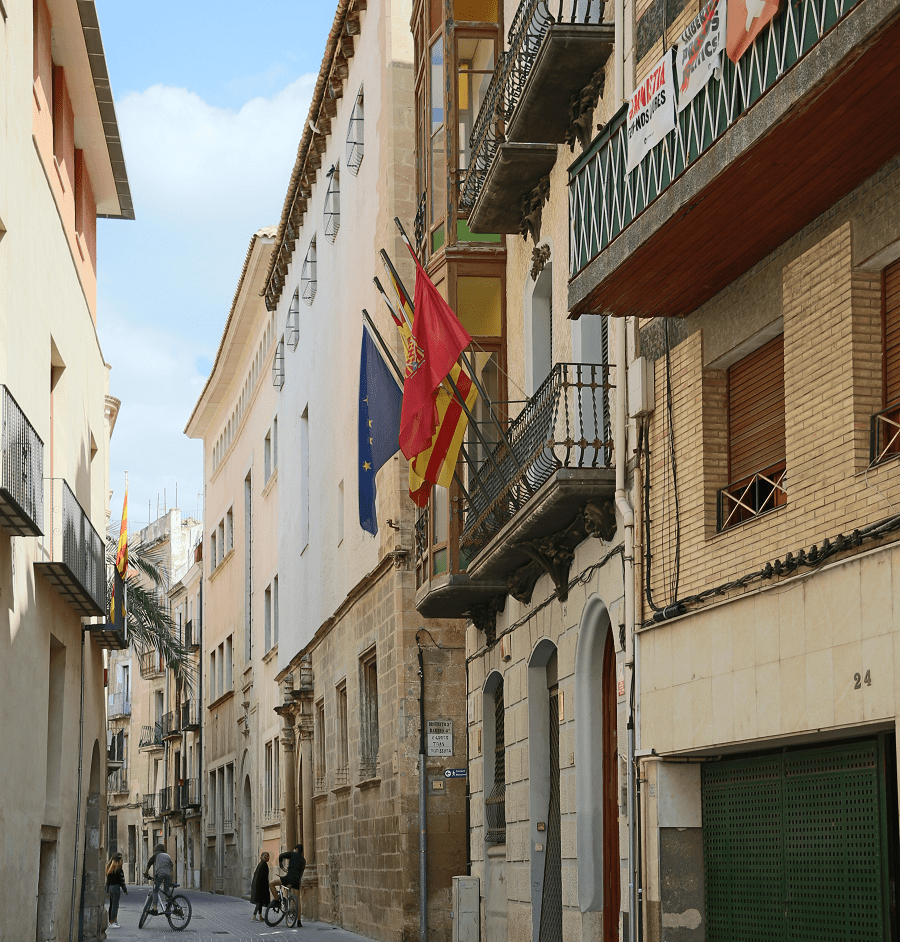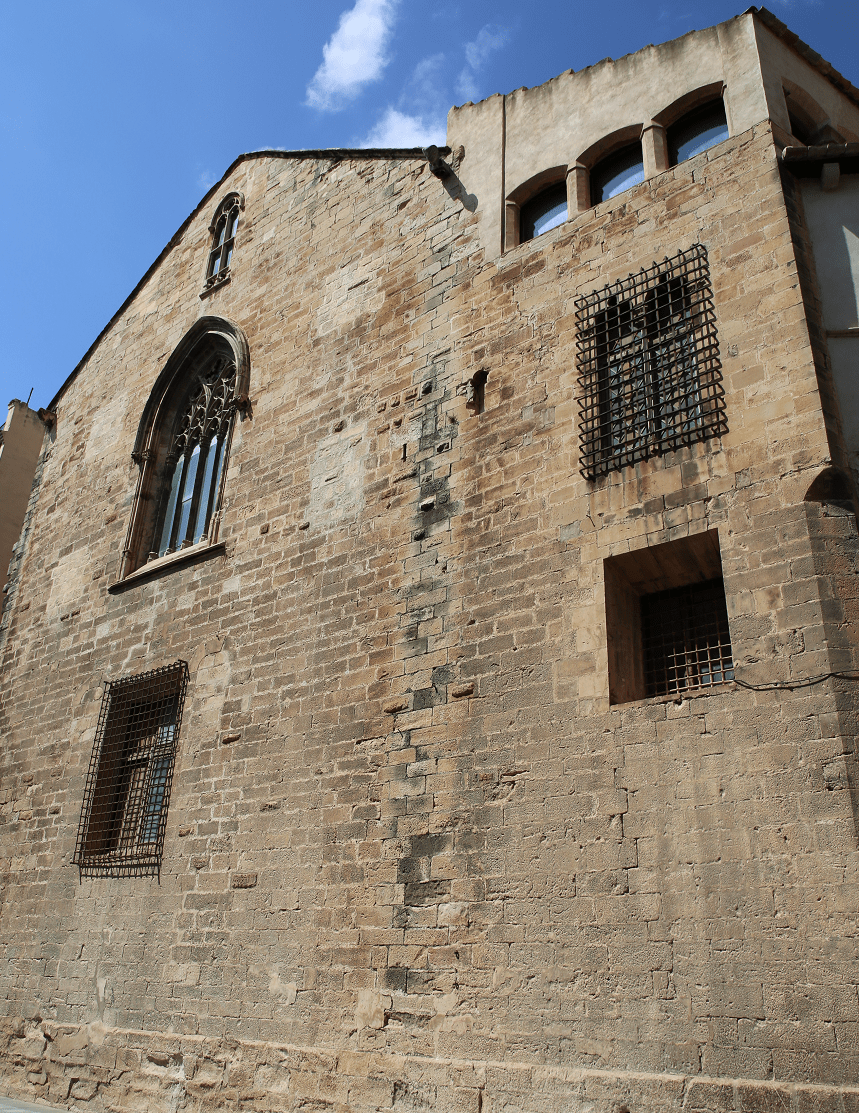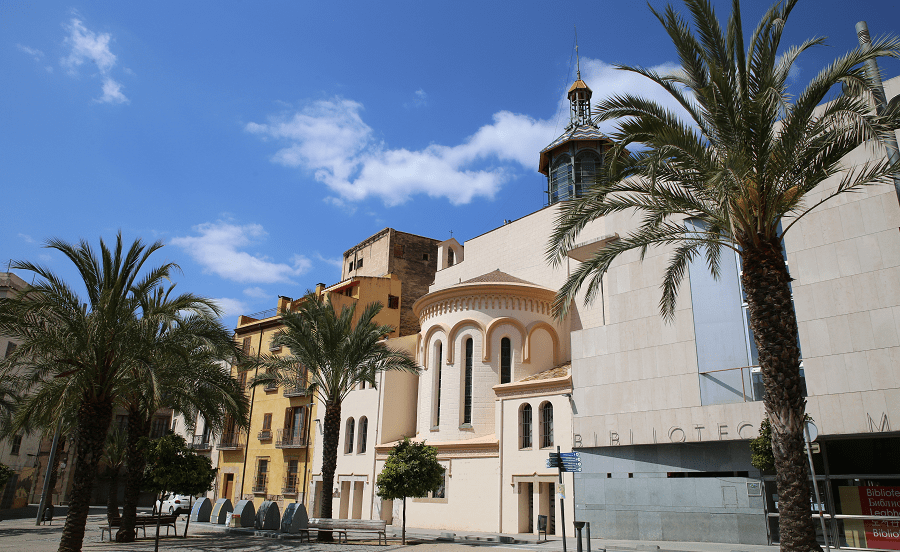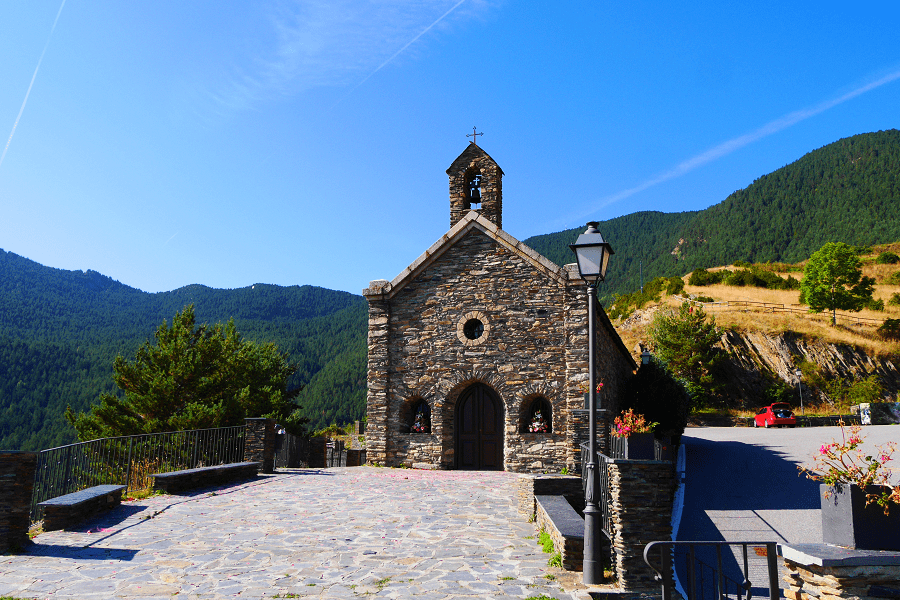Tortosa (cat. Tortosa) is a city and municipality in Spain, part of the province of Tarragona in the autonomous community of Catalonia.
Tortosa is the seat of the Diocese of Tortosa and currently has the headquarters of the territorial services of the Generalitat de Catalunya in Terres de l’Ebre as they are configured as territorial areas. It is a city rich in historical monuments, testifying to its importance to various civilizations, and especially to the Crown of Aragon.
About 2,049.30 hectares of the territory of the municipality are part of the Els Ports Natural Park, of which 73.01 hectares belong to the National Reserve Park RNP (Reserva Natural Parcial) de les Fagedes dels Ports.
Tortosa is currently one of the seven largest municipalities in Catalonia, despite the fact that in the 19th century the area of its municipality did not exceed 500 square kilometers (in 1850 the city of Roquetes was separated; in 1977 – Deltebre, in 1978 – Sant Jaume d’Enveja and in 1983 – Aldea).
The city of Iberus, the capital of the Iberian territory of the Ilerkavons, could have been located in the municipality of Tortosa. It is very likely that the main settlement was on the hill where the Suda Castle stands today. Earlier it was from Latin: Dertusa or Dertosa, via Arabic: طرطوشة Ṭurṭūshah. In 945, by order of Abd-ar-Rahman III, a walled shipyard with seventeen towers was built near the Ebro, and in 1035 it became the capital of the Kingdom of Taifa (in 2005, the ancient Arab baths were rediscovered in the area of Sant Jaume).
Main attractions
Due to its strategic position, Tortosa is primarily known for its defensive historical monuments.
La Suda de Tortosa (cat. La Suda de Tortosa) is an impressive fortress at an altitude of 59 meters above sea level, towering over the city and the Ebro River. Has an observation deck.
Fort Tenasses (cat. Fortí de Tenasses) – XVII century. It is located in the north of the city and has nothing to do with the fortified structure of the main part of the city. Until October 2014, it was privately owned, and then became part of the municipal state property.
Sitjar fortifications (cat. Fortificacions del Sitjar) – XVII century. They guard the hill that housed the San Francesc neighborhoods, the area currently occupied by the Vergé de la Cinta Hospital. Among them, there are three main forts with a large moat: the Carmen Bastion and Fort Victoria, which are connected to the outer Fort Bonet, on the outside of which a large heraldic shield is depicted.
Forts of Orleans (cat. Fortins d’Orleans) – XVII century. Located opposite the fortifications of Sitjar, they are named after the Duke of Orleans, who, after a month’s siege, took the city in July 1708 for King Philip V.
Defensive towers. There are several of them in the municipality. One of the best preserved is the Carrova Tower.
Other attractions include:
The Cathedral of Tortosa or Santa Maria (cat. Catedral de Santa Maria) began to be built in 1347, and it was consecrated only in 1597. This is a clear example of late Gothic in Catalonia.
The Episcopal Palace (cat. Palau Episcopal) is located in front of the cathedral. The building was built in the 14th century, although over time it has undergone changes, for example, it has an extension of the 18th century (with an adjacent building). Its main patron was Bishop Berenguer Prats (1316-1340). Previously, the palace was bordered by the Ebro River.
Despite the changes and the need for additional restoration work, it is the most beautiful episcopal palace in Catalonia. In 1931 it was declared a historical and artistic monument of national importance.
Palaces and estates
Montagut Castle (cat. Palau Montagut) is located on 3-5 Santa Anna street. It is the headquarters of the Canal de l’Esquerra irrigation community. Its current form is the result of a reform carried out by Carme Noguez, widow of the second Count of Torre de l’Espanyol, at the end of the 19th century (the project was signed by the architect August Fon and Carreras).
Romanesque episcopal palace (cat. Palau episcopal romànic). Located in front of the Gothic Episcopal Palace, it retains only structural elements (buttresses, arches and internal columns).
Despuig Palace (cat. Palau Despuig) XV century. Located next to the Oriol Palace, it was partially renovated between 1952 and 1956. Highlights include a large staircase to the courtyard, a Gothic gallery, and polychrome beamed ceilings, restored in 1993.
Oriol Palace (cat. Palau Oriol). On Carrer de la Rosa, there is the old palace of Marco, built in honor of the Marquis of Bella et Miana and, finally, Damia d’Oriol, the Marquis of Santa Coloma. In 1969, it was acquired by the Tarragona Provincial Council, which reinstated it between 1971 and 1974. It has polychrome beams and an interesting courtyard.
Palace Capmany (cat. Palau Capmany). Originally on Carrer de la Rosa was the palace of the Countess of Valcabra. Since 1967 it has been owned by the private company Jose Selma Prieto. Key features include a façade (18th century), a barbican (or cornice) with coffered ceilings, and a courtyard.
Palace of Abària-Aldana (cat. Casa palau Abària-Aldana). After a disagreement in 1998 over its conservation or demolition, the building was transferred to the Generalitat de Catalunya, which reopened it between 2003 and 2005. Located on Carrer Montcada, opposite the Puríssima Concepció (18th century; closed in 2007), it is the territorial seat of the Government of the Generalitat of Catalonia. Next to it, forming part of the square, are the remains of the old church of Dolores, destroyed during the Spanish Civil War. On the same street, there are other noble houses numbered 9 and 18, which belonged to the Marquis Alosh (formerly the Miraval Palace).
Palace Oliver de Boteller (cat. Palau Oliver de Boteller or Casa Villòria), 15th century. Declared an object of cultural interest, it is the territorial headquarters of the Department of Culture of the Generalitat of Catalonia. Its façade was relocated in stone from its original location on the banks of the Ebro River (about 150 meters south). In one of the corners, an ancient monumental Gothic fountain of the 15th century was restored, which until 1879 was located in the current Plaça d’Agustí Querol. In the period from 2008 to 2010, it was overhauled.
Santa Clara Convent(cat. El Convent de Santa Clara). It is one of the oldest monasteries in the city since it was founded in the thirteenth century. It is located in the microdistrict of the same name, bordering simultaneously with the medieval wall of the Rastre quarter (the first extension of the fortress city). The closed monastery was badly damaged during the Spanish Civil War.
Modernist, historic and eclectic buildings
The variety of buildings offers a wide and interesting panorama, especially suitable for lovers of architectural history. Among them:
Municipal market (cat. Mercat Municipal), 1886-1887. The work of architects named Joan Torras i Guardiola and Joan Abril i Guanyabens. It is one of the most impressive markets in Catalonia with an area of 2,650 square meters.
House of Pilar Fontanet (or “Greek House”) (cat. Casa Pilar Fontanet), 1909-1910.
Temple of the Renaissance (cat. Temple de la Reparació). The work of Joan Abril i Guanyabens, the opening took place in 1903. Located on Carrer de la Merce, it has a colorful dome that is clearly visible from different parts of the city.
House of Ricard Clement (cat. Casa Ricard Climent). Located opposite the Abària-Aldana on Moncada Street. It is the seat of the decentralized general register of the Council of the Province of Tarragona.
House of Lopez Vergés (cat. Casa López Vergés or Casa Ramon Sechí). Located at Plaça Agustí Querol, number 4. There is an old pharmacy next to it.
Piñana warehouses (cat. Magatzems J. Benet Piñana). Located on Avenida de la Generalitat street, in the immediate vicinity of the State Bridge (cat. Pont de l’Estat).
Hotel Siboni (cat. Hotel Siboni). Located at 6 l’Àngel street. The old hotel is occupied today with offices.
House of Jose Bau Vergés (cat. Casa José Bau Vergés). Located at 26 Berenguer IV Street, it is a testament to the prosperity of oil traders.
House Mateu or Facundo Segarra (cat. Casa Facundo Segarra) is another house of the Art Nouveau era, built in 1907 according to the project of Pau Monguió i Segura. A characteristic feature is the arch crowning the facade in the shape of the letter “omega”, the symbol of the Art Nouveau style.
House Salvador Brunet Sala (Casa Salvador Brunet Sala). Located in Via Cervantes, this house is the headquarters of the Official Chamber of Commerce and Industry of Tortosa.
Villa Mercedes or the house Torretes (cat. Casa de les Torretes). Built on Cervantes Street. Over time, as a result of repairs, the conical domes of the two towers were lost, and a commercial building was erected on the site of the garden.
House of Bernardo Grego (cat. Casa Bernardo Grego). Located on República Argentina street. Casa Bernardo Grego (also called Casa Jordà) – protected as a Cultural Property of Local Interest. The entrance to the building is decorated with artistic ironwork, the building has a staircase inside with three bizarre arches. The façade consists of four semicircular arches and a mezzanine with three balconies.
The Sabate Clinic (cat. Clínica Sabaté), 1914. Located in Plaça Alfonso XII, it is a rare historical architectural example in Egyptian style.
House Piñana (cat. Casa Piñana), 1923. Located at Avenida Generalitat number 105 opposite the park of Theodore Gonzalez. It is an outstanding modernist work by the architect Pau Monguió i Segura. Built in 1923. Different styles are mixed here. Rosette windows, stone and wrought iron railings demonstrate the influence exerted by the work of Antoni Gaudí.
Chalet Pallares (cat. Casa xalet Pallarés), 1906. Overshadowed by modern buildings, it still stands out with the colors of the facade and tower. Renovated in 2005, the house is the headquarters of a construction company. Pau Monguió i Segura was also its architect.
House Manuel Camos (cat. Casa Manuel Camós). Located on the Rambla de Catalunya, in the Ferreries area, it was created by the same architect – Pau Monguió i Segura (1904).
Museums and Historical Archives
In September 2012, the Museum of Tortosa was opened to the public, where the collection of the city of Tortosa is presented, which exceeds 5000 items (archeology, fine arts). The remarkable archival tradition of the city is embodied in the existence of various historical archives, of which three must be distinguished:
Ebro County Archives (ACBEB). Located in Collegi de Sant Jaume i de Sant Maties (one of the Renaissance buildings on the list of royal colleges) in Carrer de Sant Domenech. The basis of its fund is the historical archive of the city of Tortosa (photo archive, newspaper archive, historical collection and library).
Archive of the Heads of Tortosa (ACT). Located in the outbuildings of the Cathedral of Santa Maria de Tortosa. It brings together an important collection of medieval codices, parchments and some incunabula.
The Diocesan Historical Archive (AHDTo) is located in the Episcopal Palace in front of the cathedral.
Also noteworthy is the “Princely Gardens” sculpture park, which opened in 1991. This is a sample of Santiago’s street sculptures, set in the beautiful setting of the old gardens of the Manel Porkar resort in the Remolins (Jewish Quarter) and at the foot of the walls of San Joan Castle (or Souda).
Festivals and traditions
ExpoEbre is the most important multi-disciplinary fair in the south of Catalonia. Since 2007 (63rd edition), it has been held in existing premises in the Remolins area, where there is a 5,000 square meter multifunctional pavilion designed by Argentine architect Mario Coria. In 2020 and 2021, due to Covid-19, it was decided to suspend the event.
The Renaissance Festival has been celebrated since 1996 and is recognized as the National Tourist Festival of Catalonia. Dozens of actors, hundreds of residents and merchants dressed in antique costumes fill the streets of the old town and the taverns of the Ruta de la Saboga. The fun lasts 4 days. The holiday takes place in the second half of July.
“Splendor of the 16th century city” – the name of the festival with a wide range of cultural events perpetuates the historical period of the 16th century, one of the most interesting period of the city’s life. The Vegueria of Tortosa arms and flags parade is presented in all its splendor. The festival is attended by: the city hall, artisans, merchants, residents and comedians.
The Festa Major de Tortosa is celebrated on the day of the Virgen de la Cinta, the city’s patron Saint since 1863. The celebrations take place on the first Sunday in September. Festa Major lasts a week. Co-patrons since the fourteenth century are Saints Kordula and Candida of Cologne, their feast is celebrated on October 22nd.
Shopping
The rich and varied gastronomy of Terres de l’Ebre and its fresh produce, as well as many manufactured goods, can be easily found in one place: the municipal market of Tortosa. The market is an ideal place to discover the wide variety of gastronomic products in the region.
The style in which the Tortosa market is built is best described as eclectic thanks to the design contributions of Joan Torras i Guardiola. It is known locally as the “Catalan Eiffel Tower”. It was built on the site of the former bed of the Ebro River in 1884-1887. This building is of immense value to those interested in eclectic architecture.
Opening hours:
Wednesday
6: 00-14: 30
Thursday
6: 00-14: 30
17: 30–20: 30
Friday
6: 00-14: 30
17: 30–20: 30
Saturday
6: 00-14: 30
Sunday
Closed
Monday
8: 00-14: 30
Tuesday
6: 00-14: 30
Address: Plaça de Barcelona, 43500 Tortosa
Restaurants
There is one Michelin-listed restaurant in the city:
Villa Retiro, DELS MOLINS 2, 43592. Traditional cuisine.
How to get there?
By car:
From Barcelona: 2 hours 7 minutes (178 km) via C-32 and AP-7 (tolls)
From Tarragona: 1 hour (90 km) via AP-7 (tolls)
From Madrid 5 hr 28 min (544 km) via AP-7 and A-3
By train:
Direct train connections (daily) are available between Barcelona, Tarragona and Tortosa.
Main information
Area: 218 sq. km (municipality)
Coordinates: 40 ° 48 ′ 45 ″ N, 0 ° 31 ′ 16 ″ E
Population: 33,500 (municipality)
Languages: Spanish, Catalan
Currency: Euro
Visa: Schengen
Time: Central European UTC +1



